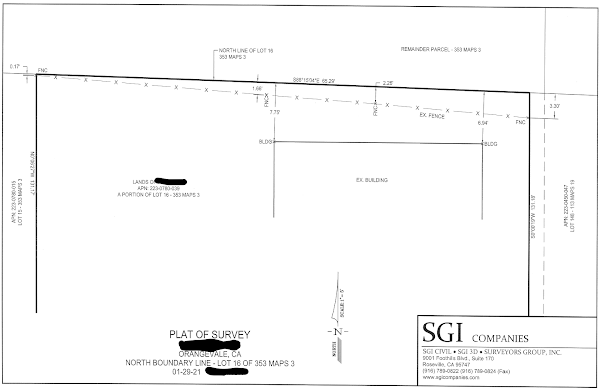On the fence
I bought my original house in 2009. It was a brand new home built by Tim Lewis Communities and I was mostly happy with the builder. Except for one thing: the backyard fence.
Before my ADU contractor started building, he measured the property lines and realized that the backyard was cut short. For some reason, when Tim Lewis built the original home and installed the backyard fence, it was was off by 3.3 feet in one corner. Had I not built the ADU on the property, I would probably not have known. Or cared. But now, I did. A lot. Because I needed these 3.3 feet to get the ADU placement comply with the building code.
The good thing was that there was a utility road behind my fence, so moving the fence was technically easy (it would not affect neighbors, and we would not even need to cut any bushes or trees, since it was mostly open space). The bad thing was that the area behind the fence belonged to the HOA. So we (a) needed to get a permission from the HOA and (b) figure out who would cover the costs.
Because moving one side of my backyard fence would not affect anyone or anything, we assumed getting the HOA permission would not be a problem. That was a mistake. For some reason, the HOA chose to be a PITA and would drag their feet for months. We sent them the property satellite photos from the Google Earth desktop app going back to 2009 that showed that the fence line did not look right, provided the official map and actual measurements, but it was not enough. The HOA demanded an official survey. I guess, they did their due diligence, but I wish they did it faster, because by the time they approved the fence relocation and refused to contribute for it (the fence was over 10 years old and would need to be replaced soon anyway, so we were hoping they would at least cover some portion of the costs) our next option was to see if we could work it out with the builder, but we were running out of time.
So after we relocated the fence, I contacted the Tim Lewis Communities office, but was told that it was too late to seek reimbursement.
It had a point (I should've done it earlier), but I was still thinking that Tim Lewis was also responsible (after all, had they installed the fence in the correct place, I would not have to deal with the fence relocation issues and could save a couple grand wasted on the site survey, materials, and extra work), so I opened a case with the Tim Lewis bonding company. Unfortunately (for me), the bonding company denied my claim due to the statute of limitations.
I was a bit disappointed that I had to pay for the Time Lewis' mistake, but it was not the end of the world. The main reason I decided to share the story was the hope that it may help someone. Here are some lessons learned.
LESSON 1: When you buy a new house or land, make sure you validate that property lines and fences are correct. You may not care about a few missing feet here and there, but at some point you may.
LESSON 2: Once you discover a problem, try working it out with the original builder as soon as possible.
LESSON 3: If the original builder refuses to help, you can file a claim with the bonding company, but do it right away.
Happy new year!
| PREVIOUS | INTRODUCTION | NEXT |




Comments
Post a Comment